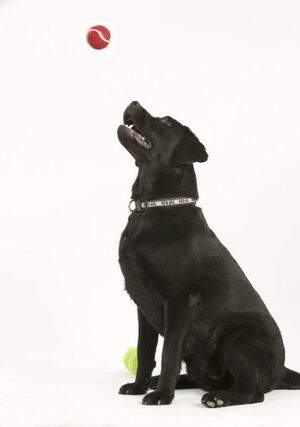Difference between revisions of "How Pet Food is Regulated - Nutrition"
Ggaitskell (talk | contribs) |
|||
| (5 intermediate revisions by 2 users not shown) | |||
| Line 3: | Line 3: | ||
|categories = [[Pet Food - Nutrition|'''Pet Food''']] | |categories = [[Pet Food - Nutrition|'''Pet Food''']] | ||
|text = Pet food in developed countries is regulated at every stage, from the ingredients used, through the production process and through to marketing and sales. Much of the legislation applies to pet food in the same way as it does to other product categories like, for instance, human food. Often more specific regulations cover both farm feed and pet food with specific legal provisions that are only applicable to pet food. | |text = Pet food in developed countries is regulated at every stage, from the ingredients used, through the production process and through to marketing and sales. Much of the legislation applies to pet food in the same way as it does to other product categories like, for instance, human food. Often more specific regulations cover both farm feed and pet food with specific legal provisions that are only applicable to pet food. | ||
| − | <br> | + | <br><br> |
Additionally, the pet food industry within a country can be self-regulated through a series of industry Codes or Guidelines that provide detailed rules for practical implementation of legislation or establish rules in fields that are not regulated by law. | Additionally, the pet food industry within a country can be self-regulated through a series of industry Codes or Guidelines that provide detailed rules for practical implementation of legislation or establish rules in fields that are not regulated by law. | ||
| − | <br> | + | <br><br> |
The objectives of legislation and self-regulation are to ensure that pet food products fulfil the nutritional need of pets, are safe for both animals and people, and that the information to consumers is accurate and truthful. Wherever pet food is manufactured, it has to meet legal requirements established by the country or region in which it is sold. | The objectives of legislation and self-regulation are to ensure that pet food products fulfil the nutritional need of pets, are safe for both animals and people, and that the information to consumers is accurate and truthful. Wherever pet food is manufactured, it has to meet legal requirements established by the country or region in which it is sold. | ||
| − | <br> | + | <br><br> |
The following sections describe the way pet food is regulated in the European Union and in the United States. Pet food provisions also exist in many other countries around the world. | The following sections describe the way pet food is regulated in the European Union and in the United States. Pet food provisions also exist in many other countries around the world. | ||
|content = | |content = | ||
| Line 15: | Line 15: | ||
:[[Dog and Cat Nutritional Guidelines]] | :[[Dog and Cat Nutritional Guidelines]] | ||
| − | |image = | + | |image = DF3W0401a.jpg |
| − | |resources = {{EduBrief|text = Underpinning much of what pet | + | |resources = {{EduBrief|text = Underpinning much of what pet owners find difficult to understand (e.g., pet food labels, manufacturing practices, types of pet foods available) is closely related to how the pet food industry is regulated. For example, what is and is not allowed to be stated on a pet food label is mandated by regulatory agencies. This is the reason much of what is on a pet food label is not inherently easy to understand by pet owners and veterinary professionals alike. Other aspects of pet foods such as the ingredients used, how they are declared, tested and marketed are also related to regulation. In this section, aspects of pet food industry subject to regulation are clarified and should provide veterinary professionals with the information they require to explain issues pet owners have about pet food.}} |
}} | }} | ||
| Line 24: | Line 24: | ||
|editor1 = [http://regulatorydiscretion.com/Page_3.html Dr. David A. Dzanis] | |editor1 = [http://regulatorydiscretion.com/Page_3.html Dr. David A. Dzanis] | ||
|editor2 = [[Sarah Abood|Dr. Sarah K. Abood]] | |editor2 = [[Sarah Abood|Dr. Sarah K. Abood]] | ||
| − | |date = | + | |date = May 2017 |
}} | }} | ||
| + | {{Mars Petcare}} | ||
| + | {{OpenPages}} | ||
| + | |||
[[Category:Pet Food Regulation]] | [[Category:Pet Food Regulation]] | ||
[[Category:To Do - Nutrition]] | [[Category:To Do - Nutrition]] | ||
[[Category:Pet Food]] | [[Category:Pet Food]] | ||
| − | |||
| − | |||
| − | |||
| − | |||
| − | |||
Latest revision as of 09:38, 14 June 2017
| |||||||||||
| |||||||||||
| This article was: Date reviewed: May 2017 |
| Endorsed by Mars Petcare, the world’s leading pet nutrition and health care business that strives to make A Better World for Pets every day. | 
|
Error in widget FBRecommend: unable to write file /var/www/wikivet.net/extensions/Widgets/compiled_templates/wrt6947a9f509b706_36164667 Error in widget google+: unable to write file /var/www/wikivet.net/extensions/Widgets/compiled_templates/wrt6947a9f51226a8_48232265 Error in widget TwitterTweet: unable to write file /var/www/wikivet.net/extensions/Widgets/compiled_templates/wrt6947a9f518af31_06821844
|
| WikiVet® Introduction - Help WikiVet - Report a Problem |
